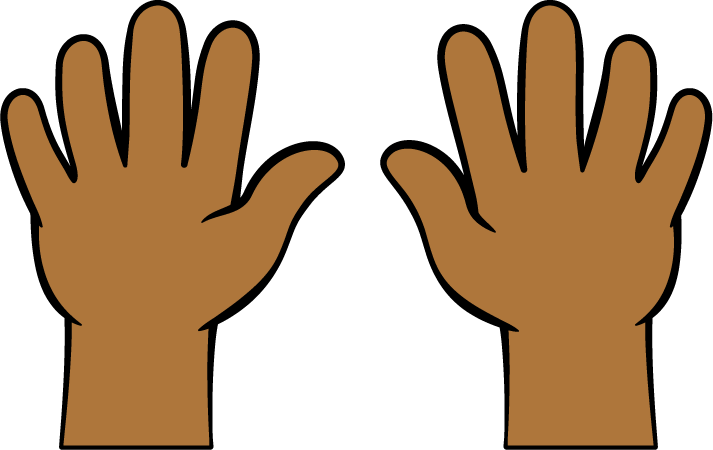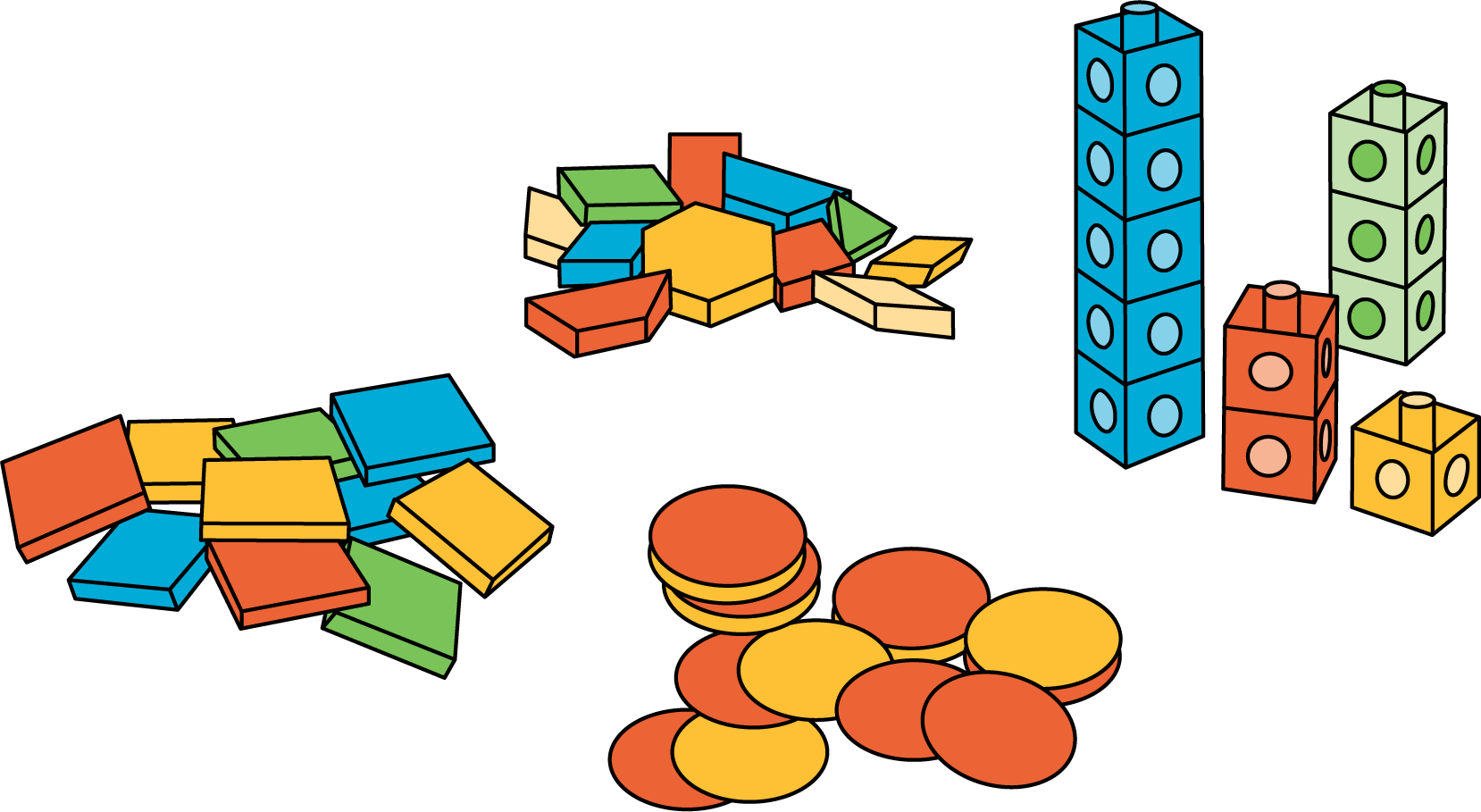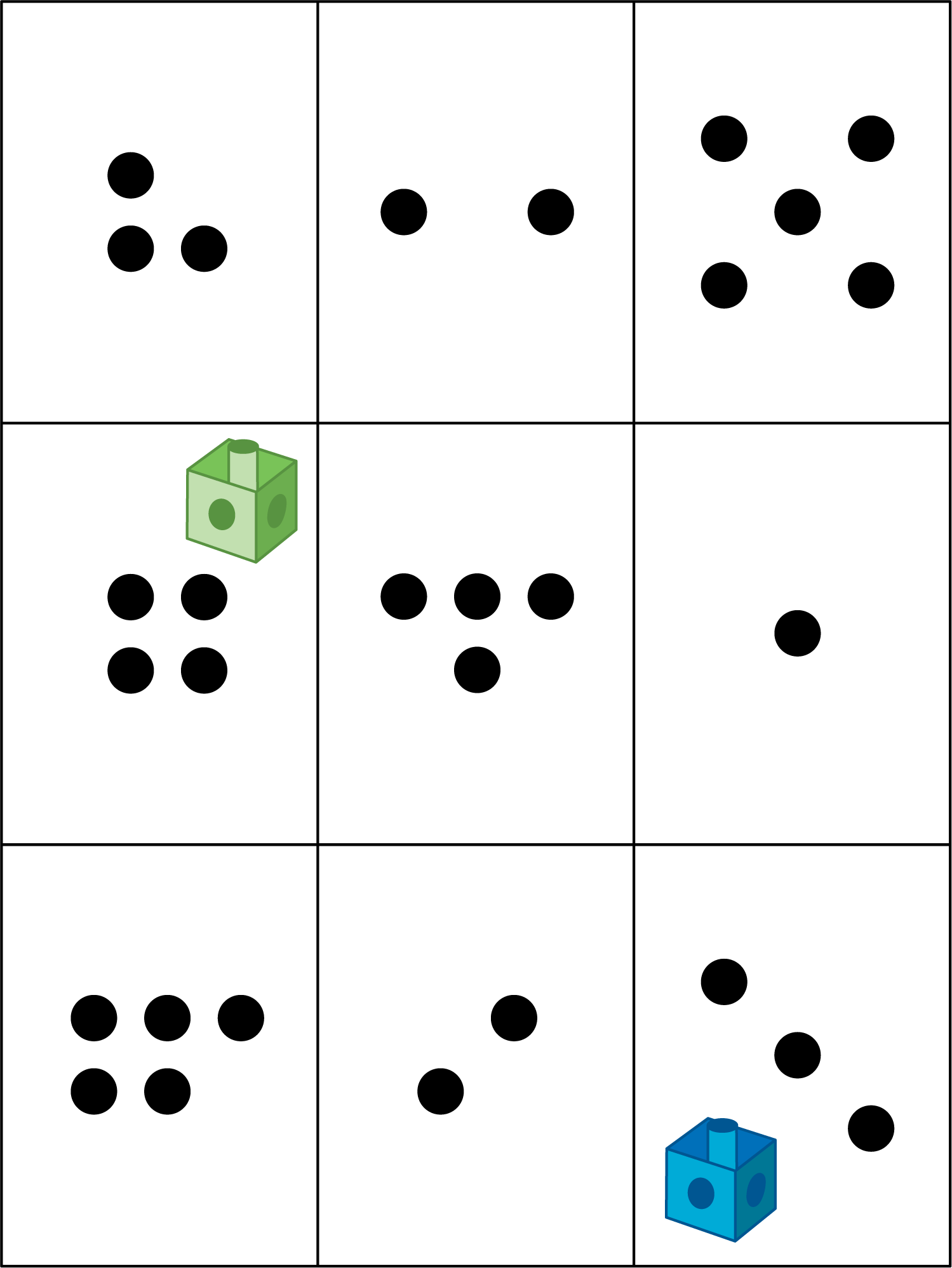Lesson 10
Introduce the 10-frame
Warm-up: Notice and Wonder: Fingers and 5-frames (10 minutes)
Narrative
Launch
- Groups of 2
- Display the image.
- “What do you notice? What do you wonder?”
- 1 minute: quiet think time
Activity
- “Discuss your thinking with your partner.”
- 1 minute: partner discussion
- Share and record responses.
Student Facing
What do you notice?
What do you wonder?


Student Response
For access, consult one of our IM Certified Partners.
Activity Synthesis
- “How are the fingers and the counters on 5-frames the same?” (Each hand has 5 fingers. Each 5-frame has 5 counters. There are 10 fingers and 10 counters.)
Activity 1: Introduce 10-frames (15 minutes)
Narrative
Launch
- Groups of 2
- Give each student a copy of the 5-frames to cut out, glue, and scissors.
- “Make each number. You can cut out the 5-frames to help you make each number.”
Activity
- 8 minutes: partner work time
- Monitor for students who glue two 5-frames, one right above the other.
Student Facing
Cut out and glue the 5-frames to make each number.
Student Response
For access, consult one of our IM Certified Partners.
Activity Synthesis
- Invite previously identified students to share their 5-frames for 9.
- “Today we are going to start using a new tool called a 10-frame. It holds 10 counters and helps us organize and show numbers. A 10-frame is two 5-frames put together.”
-
Display a 10-frame or an image, such as:
Activity 2: Numbers on Fingers and 10-frames (10 minutes)
Narrative
The purpose of this activity is for students to gain familiarity with the 10-frame by showing different numbers on it. While students may arrange the counters on the 10-frame in many different ways, the structure of the fingers, with 5 on one hand and some more on another hand, encourages students to think about the 10-frame as 2 groups of 5.
The purpose of the activity synthesis is to highlight the convention of filling out the 10-frame from top to bottom and left to right. This allows students to see numbers 6–10 in relation to 5 and also makes it easy to determine how many squares are empty. While students may organize their counters differently, representations students see will be organized this way to emphasize the structure of the tool. In addition, moving from left to right and from top to bottom aligns with and reinforces the way children learn to read.
Advances: Conversing
Supports accessibility for: Visual-Spatial Processing, Conceptual Understanding
Required Materials
Launch
- Groups of 2
- Give each student a copy of the blackline master and two-color counters.
- “Figure out how many fingers are held up in each picture. Then use your counters to show that number on the 10-frame.”
Activity
- 6 minutes: partner work time
Student Response
For access, consult one of our IM Certified Partners.
Activity Synthesis
- Display 10-frames filled as shown:


- “What is the same about these 10-frames? What is different?” (They both show 6 counters. They both have one full row and one counter in the other row. The top one has a full top row and the bottom one has a full bottom row.)
- “In the images that we’ll use in class, we will fill the top row first, from left to right, and then go to the bottom row and fill it from left to right.”
- Display 10-frame filled as shown:

- “This is how we’ll show 7.”
Activity 3: Centers: Choice Time (20 minutes)
Narrative
The purpose of this activity is for students to choose from activities that offer practice with counting, adding, composing, and decomposing numbers.
Students choose from any stage of previously introduced centers.
- Shake and Spill
- Counting Collections
- Roll and Add
Students will choose from these centers throughout the section. Keep materials from these centers organized to use each day.
Required Materials
Materials to Gather
Required Preparation
- Gather materials from:
- Shake and Spill, Stages 1–3
- Counting Collections, Stage 1
- Roll and Add, Stages 1 and 2
Launch
- “Today we are going to choose from centers we have already learned.”
- Display the center choices in the student book.
- “Think about what you would like to do first.”
- 30 seconds: quiet think time
Activity
- Invite students to work at the center of their choice.
- 8 minutes: center work time
- “Choose what you would like to do next.”
- 8 minutes: center work time
Student Facing
Choose a center.
Shake and Spill

Counting Collections

Roll and Add

Activity Synthesis
- “When you were working with your partner today, how did you decide who goes first?”
Lesson Synthesis
Lesson Synthesis
“Today we used a new tool called a 10-frame to organize and show numbers.”
Display a 10-frame with 6 red counters.
“Tell your partner what you know about this 10-frame.” (There are 10 squares on the 10-frame. There are 5 squares on the top and 5 squares on the bottom. There are 6 counters. 4 of the squares are empty.)
“Use your fingers to show how many counters are on the 10-frame.”
Cool-down: Unit 5, Section C Checkpoint (0 minutes)
Cool-Down
For access, consult one of our IM Certified Partners.




